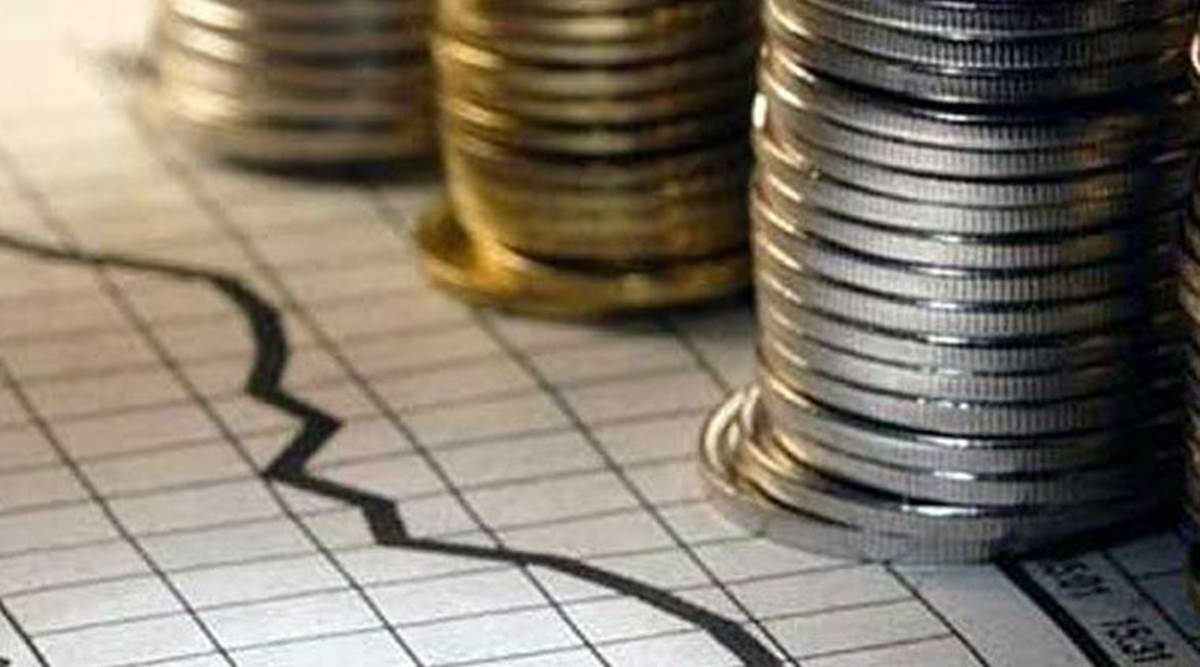
Updated: November 28, 2020 9:25:44 am
 While this is the case in most world economies, what might be of concern is that, even with a lower rate of contraction compared to the first quarter, the Indian economy remains one of the worst performers among the main economies. (Representative image)
While this is the case in most world economies, what might be of concern is that, even with a lower rate of contraction compared to the first quarter, the Indian economy remains one of the worst performers among the main economies. (Representative image)
India’s economy contracted for the second consecutive quarter through September, registering a 7.5 percent contraction in its Gross Domestic Product (GDP) in July-September, according to data released by the National Statistical Office (NSO) on Friday.
The most recent data is a significant improvement over the unprecedented 23.9 percent year-on-year contraction in April-June due to damage from the pandemic-induced lockdown. However, given that there have been two consecutive quarters of contraction, the the economy is technically in recession.
While this is the case in most world economies, what might be of concern is that, even with a lower rate of contraction compared to the first quarter, the Indian economy remains one of the worst performers among the main economies.
Chief Economic Adviser Krishnamurthy Subramanian said the second quarter growth figures were encouraging, but caution was also needed. “We must be cautiously optimistic and the caution is justified because the economic impact that we are seeing is mainly due to the pandemic,” he said.
Read | What is driving concerns about the growth of the Indian economy?
During July-September, the services sector was the hardest hit, with commerce, hotels, transportation, communications and broadcasting services registering the steepest contraction of 15.6 percent among the eight main sectors. This was followed by a 12.2% contraction in public administration, defense and other services, an 8.6% contraction in construction and 8.1% in financial, real estate and professional services.
The manufacturing sector emerged from negative territory (39.3% contraction in the first quarter) to register growth of 0.6% in the second quarter. Agriculture, forestry and fishing also grew 3.4 percent, the same as in the first quarter. Electricity, gas and other services registered a growth of 4.4% compared to a contraction of 7% in the previous quarter.
As a result, the GDP growth rate in April-September, the first half of this year, contracted by 15.7 percent compared to a growth of 4.8 percent during the same period last year. In July-September of last year, GDP had grown 4.4 percent.
Read also | The production of the core industries contracted for the eighth consecutive month in October
According to Subramanian, the sustainability of the economic recovery depends fundamentally on the spread of the pandemic. “While we have crossed the peak of the first wave in September, the winter months should warrant caution. In this context, I must emphasize that the second wave of the Spanish pandemic, which was a pandemic as devastating as this one, was quite intense, something that we must all take into account, “he said.
Subramanian further said that until the pandemic continues, some of the sectors will continue to experience declines in demand, such as the travel and tourism and services sectors. “On the whole, my stance has been neither too exuberant nor too pessimistic,” he said, calling for caution in the winter months.
Economists said the improvement in GDP in the second quarter was mainly due to the improvement in the private sector, even as government spending was reduced. “Recovery action was strong in manufacturing activity, reflecting better corporate sector profitability, along with agricultural production that benefited from the timely monsoons. On the expenditure side, better domestic demand (ex public sector) was favorable, along with net exports. The key counterweight to growth was fiscal spending, which was reflected in weak government consumption and below-average public administration. This reflects limited scope for the center and state governments in the first half of the year, ”said Radhika Rao, senior vice president and economist at DBS Bank.
Read | Covid to End FY 21, Economists See 10% Growth in FY 22 on a Low Basis
GDP growth in nominal terms, which takes inflation into account, also contracted by 4% in July-September from a growth of 5.9% last year.
The growth rate of gross value added (GVA), which is GDP minus net product taxes and reflects the income side of the national accounts, decreased by 7 percent in the second quarter from a decrease of 22, 8 percent in the first quarter and 4.3 percent. percent growth in the corresponding period last year.
The data is likely to undergo revisions as other data sources have been tapped to estimate GDP in light of the restrictions imposed due to the Covid-19 pandemic, the NSO said. “Although the restrictions have been gradually lifted, there has been an impact on economic activities. In these circumstances, reference was also made to other data sources, such as GST, interactions with professional bodies, etc. for corroborating evidence, and this was clearly limited. Therefore, estimates are likely to be subject to revision, depending on the release schedule, ”he said.
Better than Q1
As expected, the second quarter has been better than the first for the economy. The improvement has been largely due to demand from the private sector, with lower fiscal spending reflected in poor public consumption. The minor contraction is encouraging, but going forward, recovery will depend on the spread of Covid-19 in winter.
© The Indian Express (P) Ltd
.
 The Indian Express is now on Telegram. Click here to join our channel (@indianexpress) and keep up to date with the latest headlines
The Indian Express is now on Telegram. Click here to join our channel (@indianexpress) and keep up to date with the latest headlines